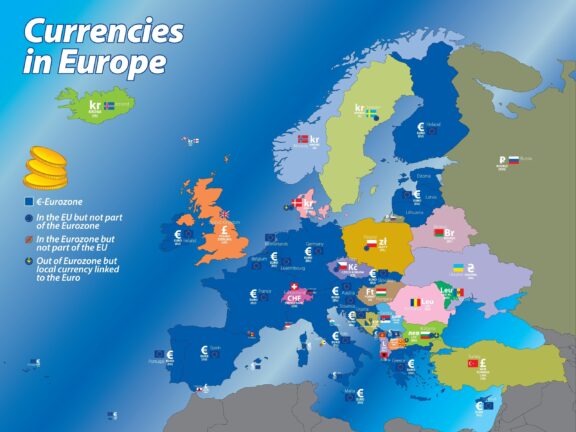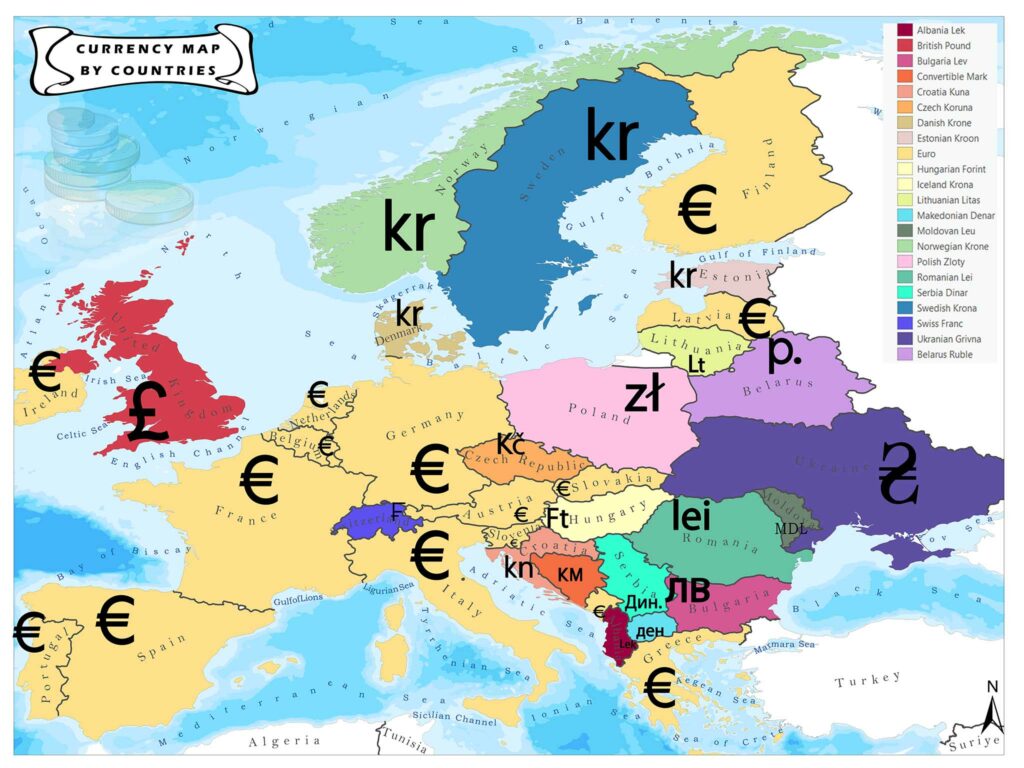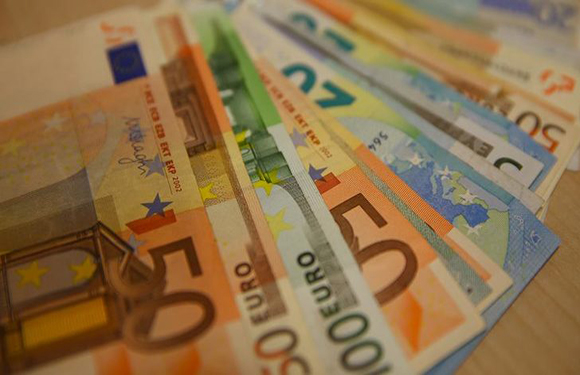Currency map shows currencies used by European countries.
European Currencies Map
Estonia joined the Eurozone on January 1, 2011, and Lithuania did so on January 1, 2015. This means that they adopted the euro as their official currency on these dates. The two countries are among the many member states of the European Union that have joined the Eurozone since the euro was introduced in 1999.

Previous Currency Map

EU Countries using the Euro
- Austria
- Belgium
- Estonia
- Finland
- France
- Germany
- Greece
- Ireland
- Italy
- Latvia
- Lithuania
- Luxembourg
- Malta
- Monaco
- Montenegro
- Netherlands
- Portugal
- Slovakia
- Slovenia
- Spain
Countries Adopting the Euro Despite Not Being Members of the European Union
Andorra, Monaco, San Marino, and the Vatican are not EU members; however, they use euros in the context of the treaties.
Furthermore, Montenegro and Kosovo, while not EU members, as well as Zimbabwe*, have adopted the euro as their primary currency without formal authorization or treaties with the European Union.
*Zimbabwe also uses the US dollar along with the Euro.
Other Currencies in Europe:
- Albania Lek (Albania)
- Belarus Ruble (Belarus)
- British Pound (United Kingdom)
- Bulgaria Leva (Bulgaria)
- Convertible Mark (Bosnia and Herzegovina)
- Croatia Kuna (Croatia)
- Czech Koruna (Czech Republic)
- Danish Krone (Denmark)
- Hungarian Forint (Hungary)
- North Macedonian Denar (North Macedonia)
- Moldovan Leu (Moldova)
- Norwegian Krone (Norway)
- Polish Zloty (Poland)
- Romanian Lei (Romania)
- Serbia Dinar (Serbia)
- Swedish Krona (Sweden)
- Swiss Franc (Switzerland, Liechtenstein)
- Ukranian Grivna (Ukraine)
Euro Countries and the Euro

- Austria: Joined the European Union (EU) in 1995 and adopted the Euro on January 1, 1999.
- Finland: Joined the EU in 1995 and adopted the Euro on January 1, 1999.
- Ireland: Joined the EU in 1973 and adopted the Euro on January 1, 1999.
- Portugal: Joined the EU in 1986 and adopted the Euro on January 1, 1999.
- Spain: Joined the EU in 1986 and adopted the Euro on January 1, 1999.
- Greece: Joined the EU in 1981 and adopted the Euro on January 1, 2001.
- Slovenia: Joined the EU in 2004 and adopted the Euro on January 1, 2007.
- Malta: Joined the EU in 2004 and adopted the Euro on January 1, 2008.
- Slovakia: Joined the EU in 2004 and adopted the Euro on January 1, 2009.
- Estonia: Joined the EU in 2004 and adopted the Euro on January 1, 2011.
- Latvia: Joined the EU in 2004 and adopted the Euro on January 1, 2014.
- Lithuania: Joined the EU in 2004 and adopted the Euro on January 1, 2015.
Founding Members of the European Union
- Belgium: A founding member of the European Union and one of the first countries to adopt the Euro on January 1, 1999.
- France: A founding member of the European Union and adopted the Euro on January 1, 1999.
- Germany: A founding member of the European Union and adopted the Euro on January 1, 1999.
- Italy: A founding member of the European Union and adopted the Euro on January 1, 1999.
- Luxembourg: A founding member of the European Union.
- The Netherlands: A founding member of the European Union and one of the first countries to adopt the Euro on January 1, 1999.